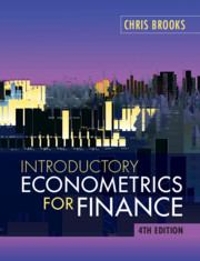Returning to the example of day-of-the-week effects in Southeast Asian stock markets, although significant coefficients in equation
Question:
Returning to the example of day-of-the-week effects in Southeast Asian stock markets, although significant coefficients in equation (10.4) will support the hypothesis of seasonality in returns, it is important to note that risk factors have not been taken into account. Before drawing conclusions on the potential presence of arbitrage opportunities or inefficient markets, it is important to allow for the possibility that the market can be more or less risky on certain days than others. Hence, low (high) significant returns in equation (10.4) might be explained by low (high) risk. Brooks and Persand thus test for seasonality using the empirical market model, whereby market risk is proxied by the return on the FTA World Price Index. Hence, in order to look at how risk varies across the days of the week, interactive (i.e., slope) dummy variables are used to determine whether risk increases (decreases) on the day of high (low) returns. The equation, estimated separately using time-series data for each country can be written
(10.8)
where αi and βi are coefficients to be estimated, Dit is the ith dummy variable taking the value 1 for day t = i and zero otherwise, and RWMt is the return on the world market index. In this way, when considering the effect of market risk on seasonality, both risk and return are permitted to vary across the days of the week. The results from estimation of equation (10.8) are given in Table 10.2. Note that South Korea and the Philippines are excluded from this part of the analysis, since no significant calendar anomalies were found to explain in Table 10.1.
Table 10.2 Day-of-the-week effects with the inclusion of interactive dummy variables with the risk proxy As can be seen, significant Monday effects in the Bangkok and Kuala Lumpur stock exchanges, and a significant Thursday effect in the latter, remain even after the inclusion of the slope dummy variables which allow risk to vary across the week. The t-ratios do fall slightly in absolute value, however, indicating that the day-of-the-week effects become slightly less pronounced. The significant negative average return for the Taiwanese stock exchange, however, completely disappears. It is also clear that average risk levels vary across the days of the week. For example, the betas for the Bangkok stock exchange vary from a low of 0.36 on Monday to a high of over unity on Tuesday.
This illustrates that not only is there a significant positive Monday effect in this market, but also that the responsiveness of Bangkok market movements to changes in the value of the general world stock market is considerably lower on this day than on other days of the week.
Step by Step Answer:






